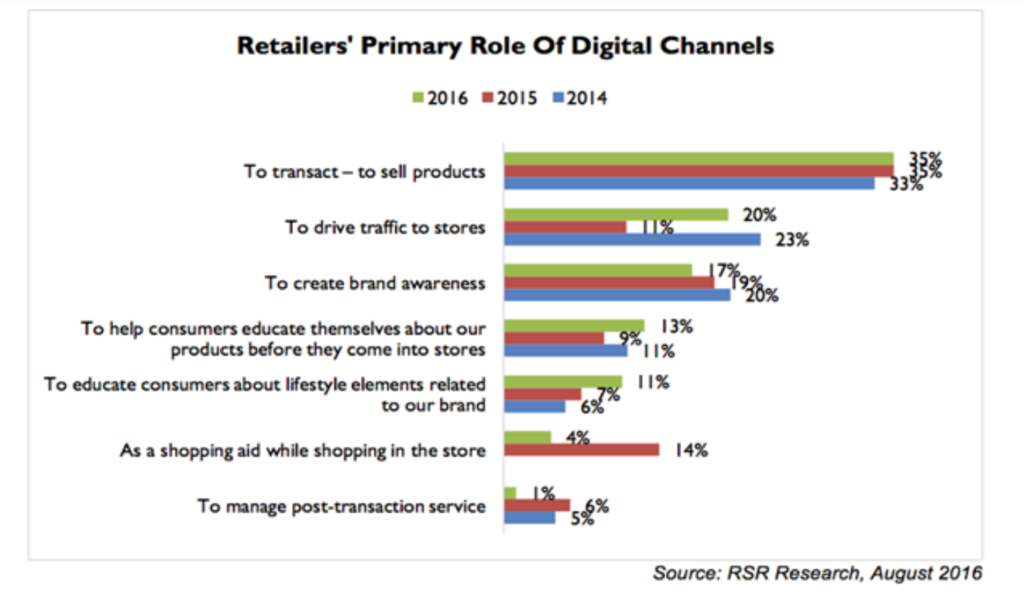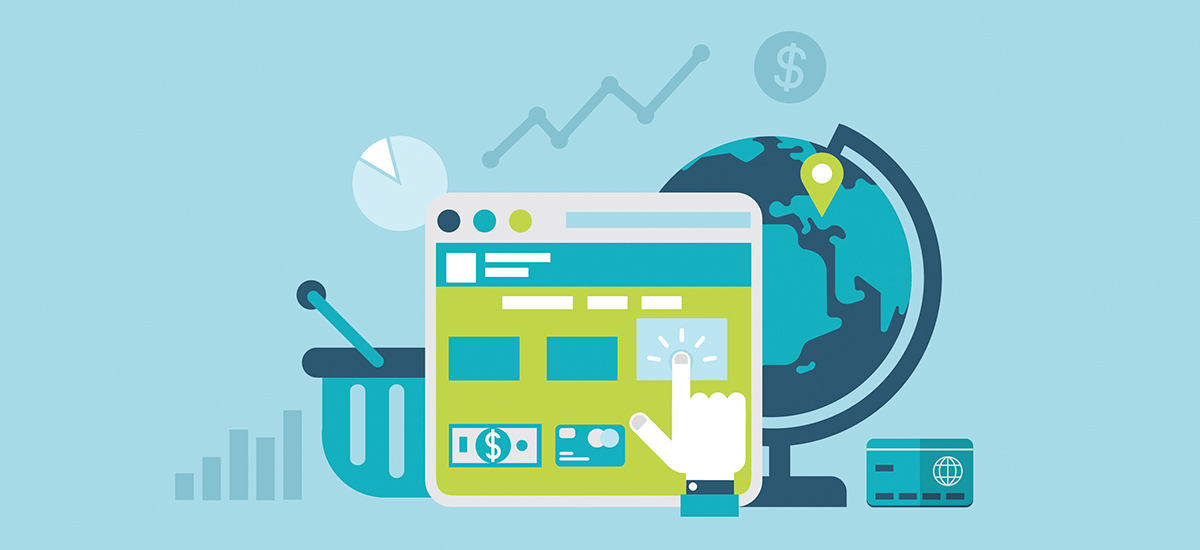“We can no longer be a little bit digital” – Circa 2017.
Previously, the main use of digital channels for retailers globally was customer support in managing post-transactional service. Digital channels provide a key avenue for educating customers about either lifestyle elements related to the retail brand or discoverability of products available in the stores. For customers, this meant that they could use the digital tools as a shopping aid within the brick and mortar store. This is how the loop was closed then.

As it stands today, online sales transactions are now accounting for a significant share of the overall revenue for global retailers. This article looks at two areas that retail stores need to factor as they use digital channels.
Declining Footfall Trend vs Increase in Retail Business Overall (Local Relevance)
Foot traffic to retail stores has reduced significantly as shown below.
The declining footfall worldwide is not to be confused with the fact that retail is growing. Given Kenya’s ICT policies that favors high speed (broadband), our internet penetration levels, reducing costs of data, and our unique place in the world in creation and adoption of digital technologies; the pace of the dying footfall to retail stores in Kenya will be much faster compared to the global average.
Do note that footfall is no longer a key metric to measure growth or prospects for sales. Instead the key metric now is availability. For example, purchasing of tokens and paying of electricity bills was one of the strategies employed by retail stores in the hope that this would translate into increased footfall to the stores which in turn would increase in-store purchases of other products on offer. The reality today is that many people no longer pay their electricity bills at the store but do so via mobile money at the comfort of their homes or offices thus denoting availability.
The growth in retail despite the drop in footfall has been facilitated by the adoption of digital commerce and shifting business logistics to align with the behaviors and changing culture of customers. Retailing in the Digital Age is about ensuring that the customer consumes your product (not where they consume it) and knowing your customers means bridging the gap between their brick-and-mortar and online shopping experiences.
Social/Conversational Commerce – the next frontier?
A top emerging trend in e-commerce is the opportunities coming from the growth and adoption of social media messaging platforms such as Facebook Messenger, WhatsApp and Telegram. In their most recent report, Business Insider Intelligence takes a close look at the size of the global messaging app market, how these apps are changing, and the types of opportunities for monetization that have emerged from the growing audience that uses messaging services daily.
Here are some of the key takeaways that we need to keep in mind:
- Mobile messaging apps are massive. The largest services have hundreds of millions of monthly active users (MAU). Ever falling data prices, cheaper devices and improved features are helping propel their growth and adoption.
- Messaging apps are about more than messaging. The first stage of the chat app revolution was focused on growth. In the next phase, companies are focusing on building out services and monetizing chat apps’ massive user base.
- The Globally popular WhatsApp is openly developing and testing tools that will allow retailers and consumers to communicate while Uber has actively integrated into Facebook Messenger. Popular Asian messaging apps like WeChat, KakaoTalk, and LINE have taken the lead in finding innovative ways to keep users engaged. They’ve also built successful strategies for monetizing their services.
- Media companies, and marketers are still investing more time and resources into social networks like Facebook and Twitter than they are into messaging services. That will change as messaging companies build out their services and provide more avenues for connecting brands, publishers, and advertisers with users.
Kenyans have adopted eCommerce in a slightly different way compared to other markets. Social Media in Kenya is at the forefront of eCommerce, having leapfrogged the West in what is referred to as ‘Conversational Commerce’, the intersection of messaging apps and shopping. More and more online shopping is happening via Instagram, WhatsApp, Telegram and other messaging apps, mostly driven by small niche retailers.
In recent years, digital channels have moved from being just about brand awareness and driving traffic to the physical stores but more of a key avenue for driving end to end retail experience and in the process creating value not only for themselves but for their customers as well.

